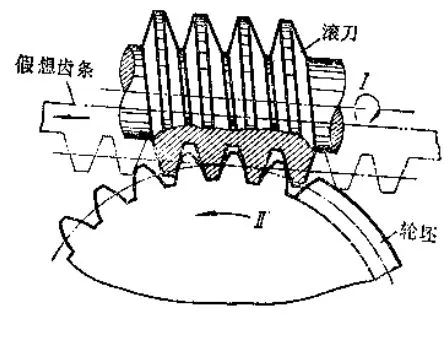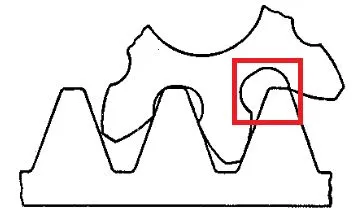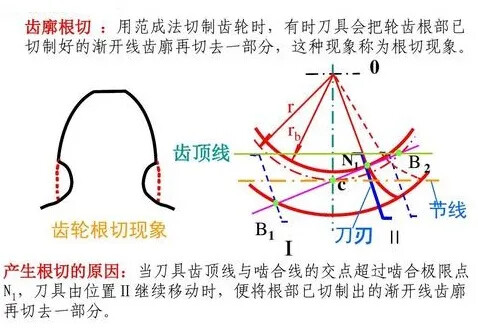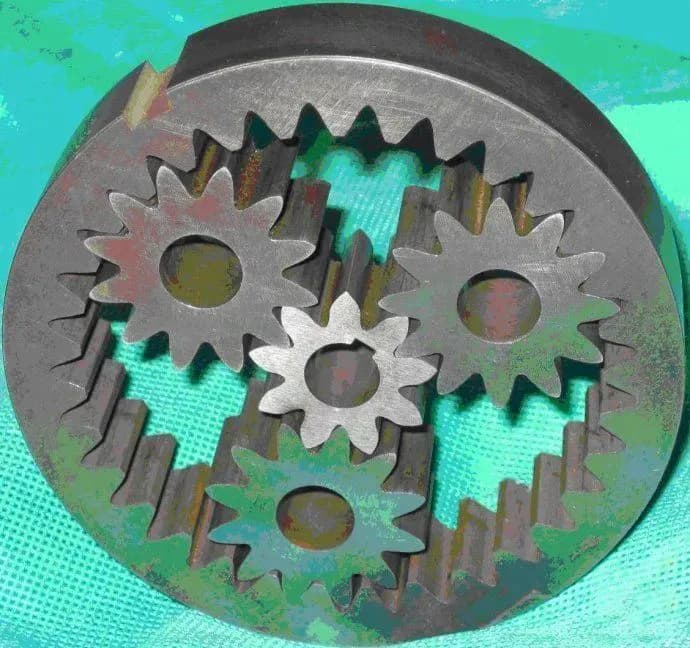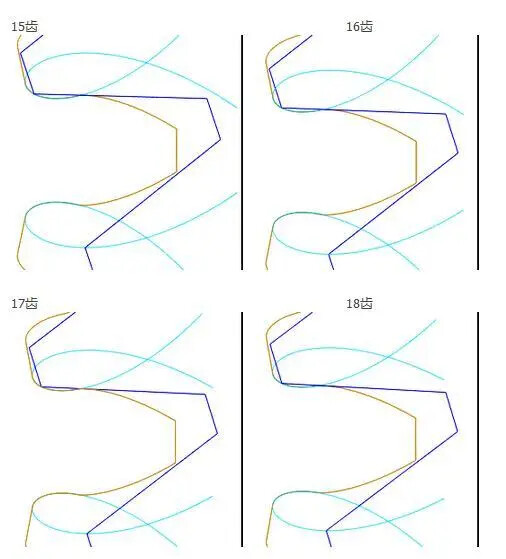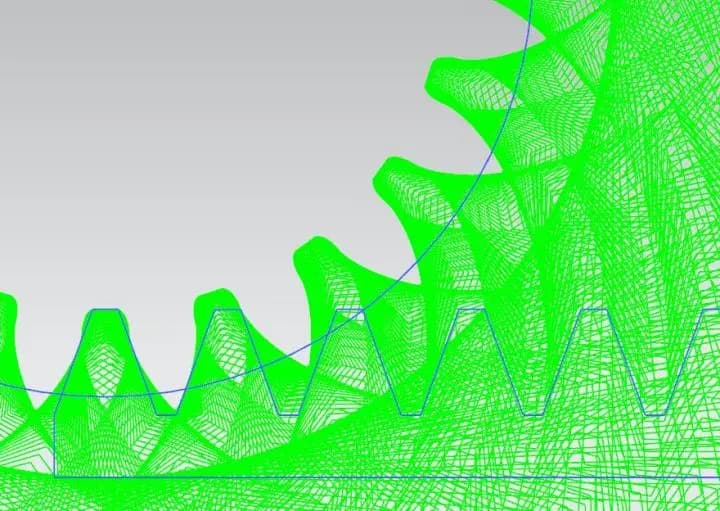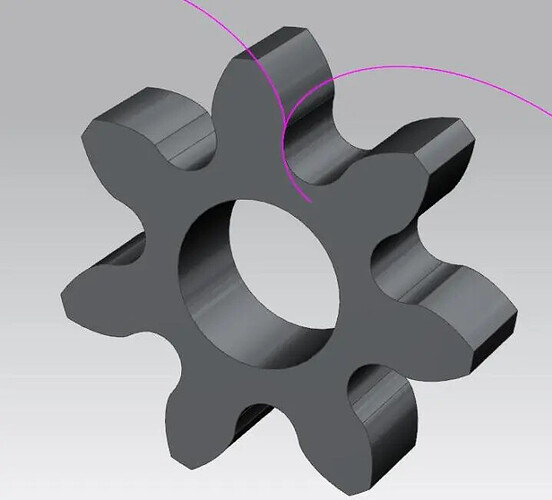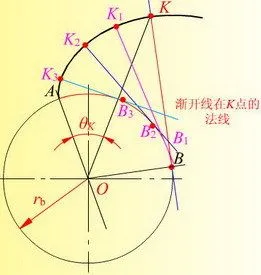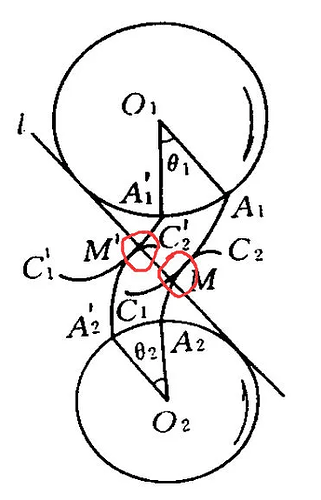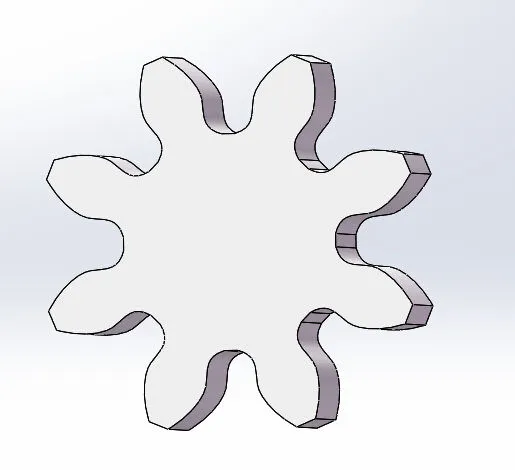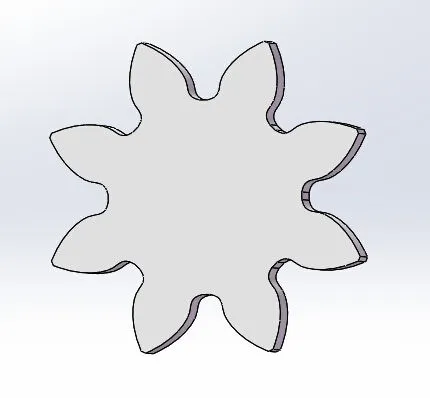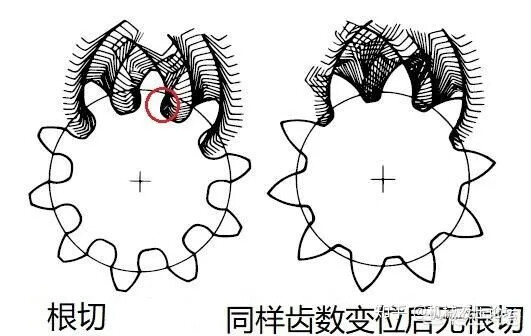Gears are widely used components in various industries, including aviation, shipping, and automobiles. However, when designing and manufacturing gears, there are specific requirements regarding the number of teeth. Some say that gears with fewer than 17 teeth cannot turn, while others argue that gears with fewer than 17 teeth are quite common. Both of these statements have some truth. But why is 17 teeth the critical threshold? Let’s take a closer look.
Why 17 teeth?
The issue of why a gear typically shouldn’t have fewer than 17 teeth is tied to the gear manufacturing process. One commonly used method is using a hob cutter to cut the gear teeth.
When a gear has a small number of teeth, root cutting (also known as “undercutting”) can occur. Root cutting happens when the gear’s tooth root is excessively cut away during the manufacturing process, weakening the gear’s strength. The reason this happens is that when the gear teeth are too few, the gear profile becomes more aggressive, and the intersection of the tooth top with the meshing line exceeds the limit of the tooth’s engagement point, causing the involute tooth profile to be cut away, resulting in root cutting.
In the diagram below, the red box shows where root cutting occurs.
When the number of teeth is fewer than 17, the involute curve of the gear teeth may be compromised, weakening the gear and making it more prone to failure. To avoid this, the minimum number of teeth that ensures proper engagement and avoids root cutting is typically 17 teeth (for gears with a pressure angle of 20° and a height coefficient of 1).
Why not other numbers?
So, why specifically 17 teeth? It’s because of the specific properties of gear cutting. If a gear’s number of teeth is fewer than 17, root cutting will occur, weakening the strength and stability of the gear. However, if the teeth count is 17 or more, the gear teeth will mesh properly and will not experience root cutting, making the gear stronger and ensuring smooth operation.
Moreover, 17 is a prime number, meaning that the engagement pattern between a particular tooth on this gear and teeth on other meshing gears will have the least overlap in a given number of rotations, helping to distribute load evenly and reducing the likelihood of localized wear or stress. This helps in prolonging the lifespan of the gears.
But what about gears with fewer than 17 teeth?
Indeed, there are gears with fewer than 17 teeth that work fine under certain conditions. The key is that if different manufacturing methods are used, such as modified gears or helical gears, the root cutting issue can be avoided.
For example, displaced gears (where the cutter is offset slightly from its usual path) or helical gears can allow gears with fewer than 17 teeth to function properly. These methods ensure that the teeth engage more smoothly, preventing root cutting.
A deeper perspective from engineers
Some engineers point out that the theoretical minimum number of teeth to avoid root cutting is not strictly 17. The value of 17 teeth is based on specific assumptions about the cutting tool geometry. In reality, the cutting tool usually has a small radius at the tip of the teeth (referred to as the R angle), which modifies the root cutting behavior. With proper adjustments, gears with fewer than 17 teeth can also work, though they may suffer from issues such as increased wear and reduced strength over time.
In fact, for some gears with fewer than 17 teeth, root cutting doesn’t even occur if the tool geometry is designed appropriately.
